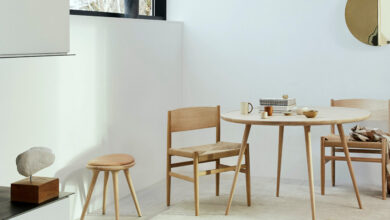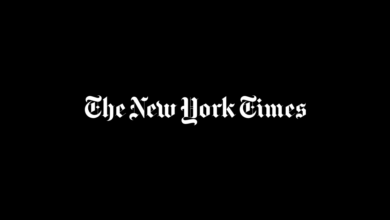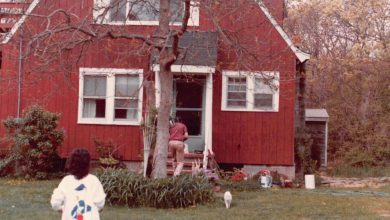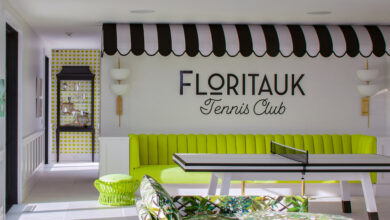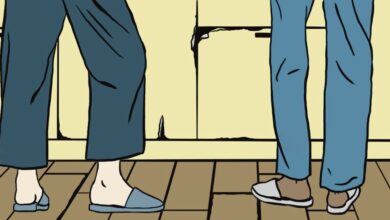House Hunting in Italy: See-Through Floors in Milan for $1.8 Million
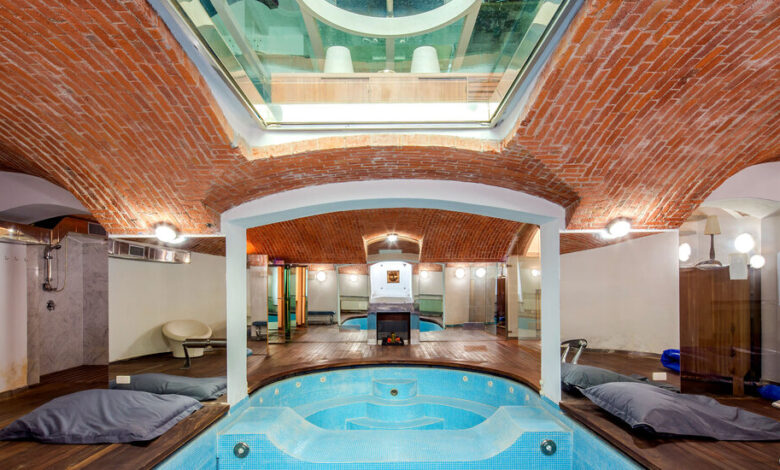
A Three-Bedroom Townhouse in the Heart of Milan
$1.83 MILLION (1.6 MILLION EUROS)
This three-bedroom loft-style townhouse stands in Porta Venezia, a multicultural neighborhood known for its art nouveau and neoclassical architecture, near the center of Milan, Italy’s financial and fashion epicenter.
The three-level, 3,552-square-foot house was converted in the 1990s from an atelier in the rear courtyard of an early 20th-century apartment building, with 15-foot ceilings and large glass panels set between the beams of its wood plank floors upstairs and on the ground floor.
“The idea is to give the loft a floating atmosphere and light,” said Diletta Giorgolo, head of residential for Italy Sotheby’s International Realty, which has the listing. A heated pool and spa in the basement are visible through the ground-floor glass.
“It is not the typical family home,” added Ms. Giorgolo. “It is more for a couple of artists or architects or people in fashion.”
Entry is through the main building, which has 14 apartments. The ground-floor living area has walls that curve to either side of a floor-to-ceiling, frosted mullioned central window. At the opposite end of the room, a discrete sitting area with a fireplace is under the second-floor loft, with see-through ceilings. The sofa, fireplace and a sculpture by Igor Mitoraj, a Polish artist, are included in the sale.
The kitchen has wood cabinets and a refrigerator cloaked by matching cabinetry, and the curved countertop is glass embedded in cement. A powder room and laundry/utility room are adjacent to the kitchen.
A wood staircase with open treads and a glass balustrade lead up to the loft and the primary bedroom suite, which has a mirrored wall behind the bed and a walk-in closet. Glass-paneled floors make the living room visible below. A semicircular balcony with a curved metal railing and horizontal balustrades overlooks the living room.
Access to the two other bedrooms, both with en suite baths, is through the primary bedroom. Each has a closet and a bathroom with a shower. The third bedroom is currently set up as a study.
The basement, down a wood staircase, has a teak floor and a vaulted brick-barrel ceiling. Beyond the pool and spa is a sauna with a see-through ceiling, a shower and relaxation area.
The apartment is on Via San Gregorio, an avenue lined with ethnic restaurants, small shops and a boho vibe. Around the corner is the Corso Buenos Aires, whose more than 350 clothing shops make it the longest shopping street in Italy. Porta Venezia, the historic city gate from which the neighborhood takes its name, is a few blocks away, as is Milan’s Central Station and the Giardini Pubblici Indro Montanelli, a large city park that is home to the Natural History Museum. Milan Malpensa Airport is about 45 minutes by car.
Market Overview
Milan, the capital of Italy’s northern Lombardy region, is among the country’s most expensive housing markets. The residential landscape ranges from venerable palazzos with elegant facades to villas and townhomes with hidden gardens. Flats in bohemian enclaves are within the city’s medieval walls. But new construction is changing the face of the city, even if the pandemic has slowed the market for it.
“The new developments are taking the city to another stage, very much appreciated from international buyers that can find international schools, expat communities and buildings with facilities,” Ms. Girogolo said.
In the transformed Porta Nuova district, a former industrial area, trees and plants cover the terraces on the Bosco Verticale, a solar-powered twin-tower high-rise. Nearby, on the old fairgrounds of the historic city, the mixed-use CityLife redevelopment district includes a winding apartment complex with seven buildings from five to 13 floors, and a twisted 44-story tower designed by Zaha Hadid, among other attractions.
The Milan market “has been steadily growing, especially since 2016,” said Arianna Giovanni, marketing manager of Lionard Luxury Real Estate. During the pandemic, sales have continued with video property tours and contracts signed via proxy, she said, although “inventory has sensibly shrunk.”
“It’s been very hard to find penthouses with good terraces,” she said. “People now mostly desire properties with some outdoor space.” That includes villas beyond the city limits that are within commuting distance to downtown, as well as “self-sufficient country estates.”
At the top of the market, prices for prime two-bedroom, two-bath apartments and villas range from 1.3 million to 8 million euros ($1.49 million to $9.1 million), Ms. Giovanni said, depending on the state of the unit, of the building, the location and the presence of outdoor spaces.
In the first quarter of 2021, some 6,000 sales were recorded in Milan, “evidence of the recovery of the Italian real estate market,” Ms. Girogolo said. “It has even been higher than in pre-Covid times.” According to Sotheby’s internal data, the median price for properties sold so far this year is about 2.5 million euros ($2.86 million), with the top sale, at 11.5 million euros ($13.2 million), coming in the Quadrilatero high-fashion district, she said.
In Centro, the city’s historical center and most expensive area, a buyer could expect to pay close to 9,400 euros a square meter ($1,000 a square foot) in September 2021, according to data from the market and consumer data portal Statista.com.
Antonio Zagaroli, managing director of Knight Frank Italia, noted that property prices in Milan rose more than 10 percent from the second quarter of 2019 to the second quarter of 2020. “However, in 2021 price growth looks to be slowing, as the annual growth registered in the first half of the year is 2.6 percent,” he said, citing data from the Knight Frank Global Residential Cities Index.
Mr. Zagaroli expects the market “will be bullish for the next three to four years,” potentially buoyed by the 2026 Winter Olympics scheduled for Milan. Plans call for the old Porta Romana railway yard to be recreated as an eco-friendly mixed-use district for the Games, with athletes’ housing turned into student and affordable housing afterward, while the Olympic Village would become a self-sustaining neighborhood.
An annual flat tax of 100,000 euros ($114,459), instituted in 2016, is helping lure high-net-worth foreigners with annual incomes of more than 250,000 euros ($286,000), particularly from Europe and Asia, who declare Italy as their primary residence, Mr. Zagaroli said.
And foreign retirees are eyeing a tax bait, introduced in July 2020, guaranteeing 7 percent income tax for 10 years on income generated abroad, including pensions, rental income, annuities and other profits. “We sold more throughout Italy due to the flat tax,” Ms. Girogolo said, and she expects “many more” sales next year, provided there is no new Covid variant.
Who Buys in Milan
In 2020, most buyers were Italians “due to travel restrictions caused by Covid-19,” Ms. Girogolo said. As travel bans lifted, that changed.
“From the Far West to the Far East, we have seen clients coming from the most unexpected regions of the world nowadays,” Ms. Giovanni said, including Australia and Taiwan.
Alessandro Riboni, chief executive of Knight Frank Italia, said many people are moving from Paris and London because “the quality of life is very high in Milan,” with the seashore, mountains and lakes all within two hours.
Buying Basics
There are no restrictions on foreign ownership in Italy. The closing is done by a neutral notary public, chosen and paid for by the buyer. A lawyer is unnecessary if buyers purchase as a private person and do not move their residence to Italy, Ms. Giorgolo said.
Stamp duties, broker fees and notary fees total between 7 and 9 percent on top of the purchase price.
New construction or a recently renovated property from a developer incurs a value added tax of either 10 percent or 22 percent, bringing closing costs to 16 percent to 29 percent on top of the purchase price, Ms. Giovanni said.
Access to financing can be difficult, Ms. Giovanni said. “The fact that their main source of income is abroad represents a risk for our banks, due to current regulations,” she said.
Websites
Languages and Currency
Italian; euro (1 euro = $1.15)
Taxes and Fees
The monthly maintenance fee is 300 euros ($341).
Property taxes range from 0.4 percent to 0.7 percent of the fiscal value, depending on the locale and property type, Ms. Girogolo said.
If the townhouse is purchased as a first residence, the buyer would pay a stamp duty of 6,000 euros ($6,890). If purchased as a second home, stamp duty or purchase tax is about 31,000 euros ($35,600) Ms. Girogolo said.
Contact
Diletta Girogolo, Italy Sotheby’s International Realty, 011-39-333-677-6473; sothebysrealty.com
For weekly email updates on residential real estate news, sign up here. Follow us on Twitter: @nytrealestate.


